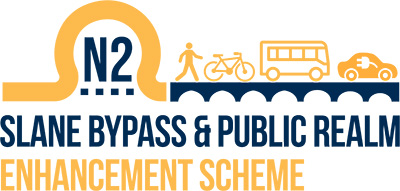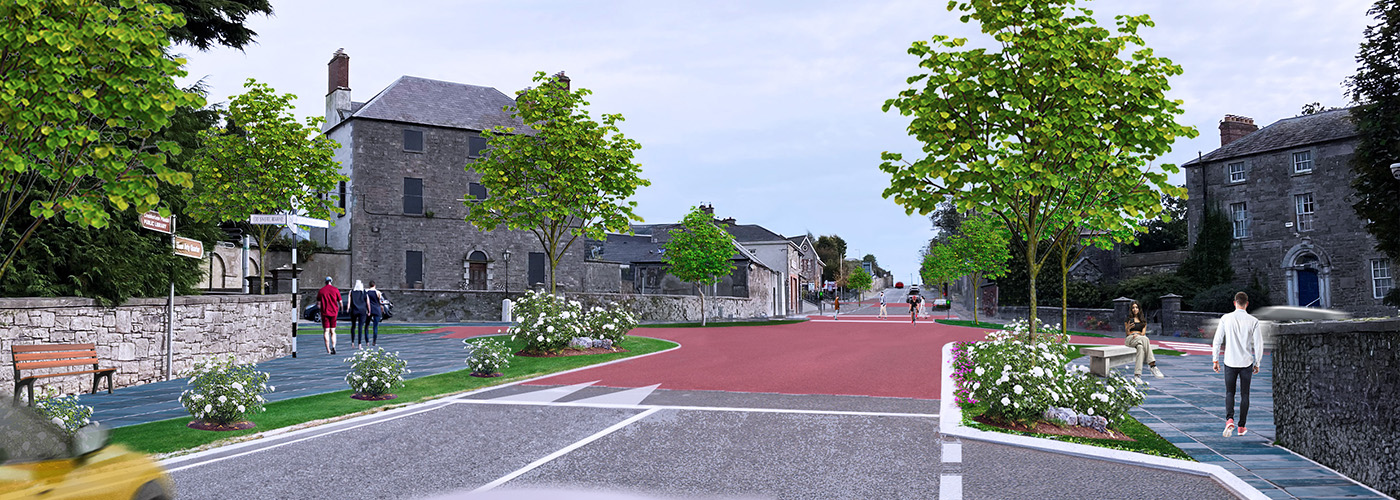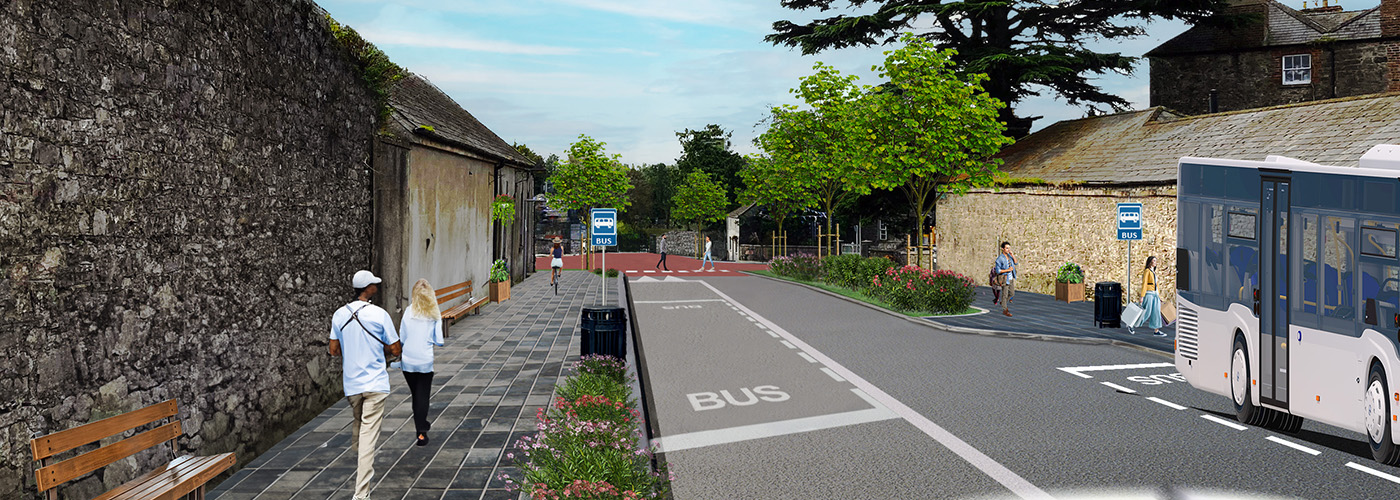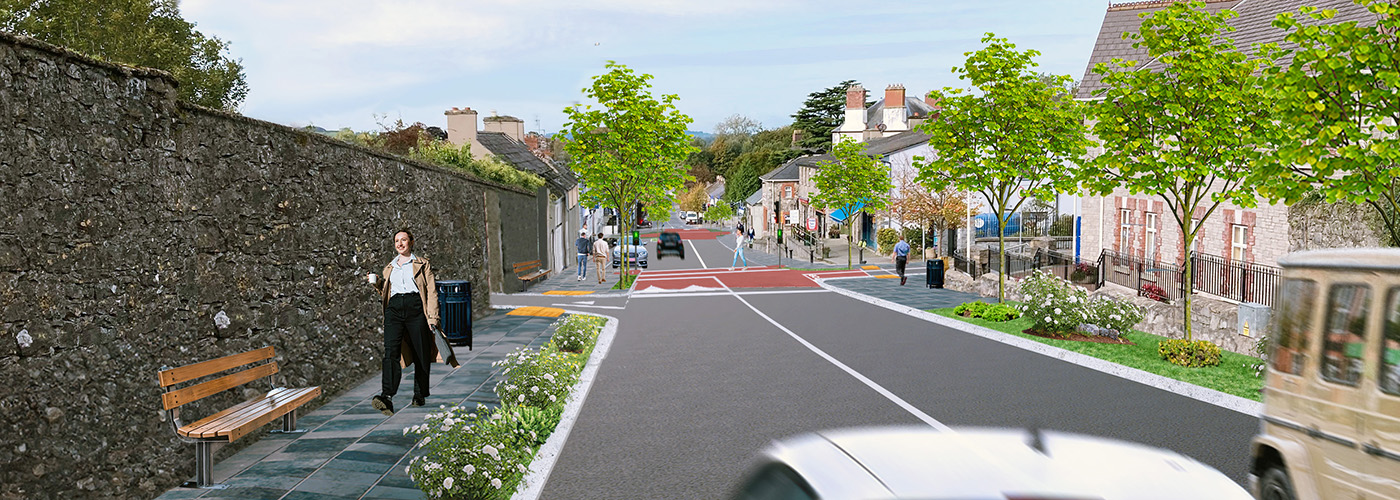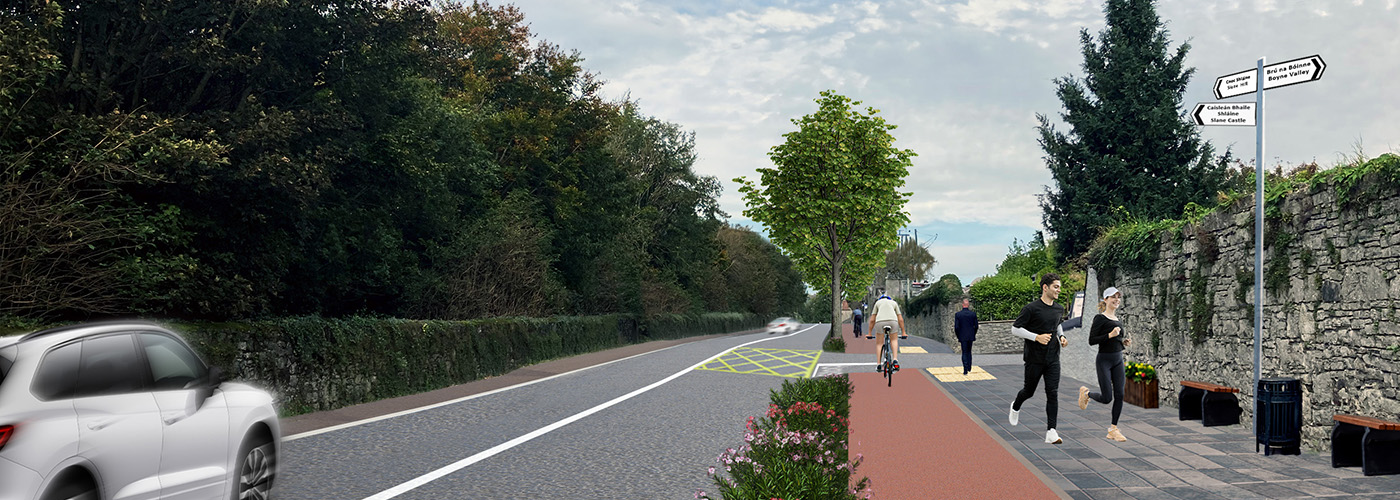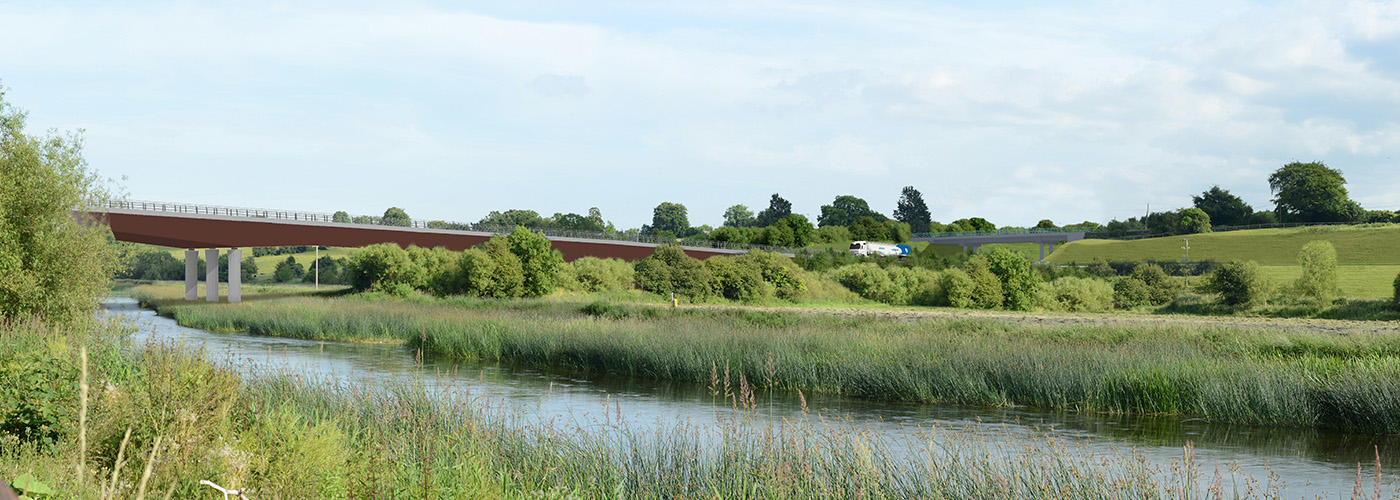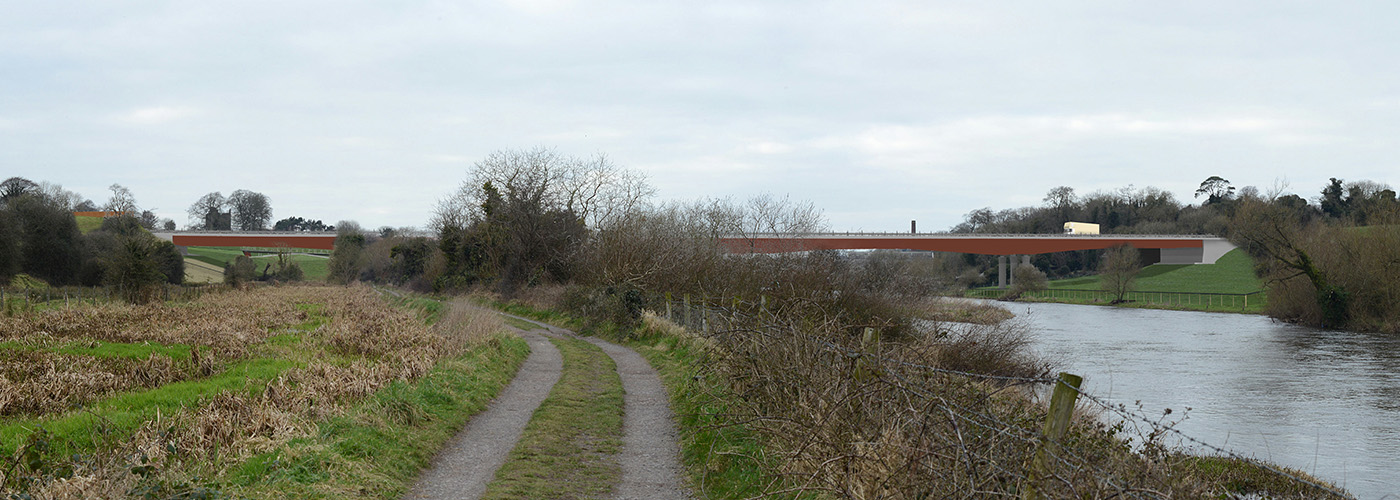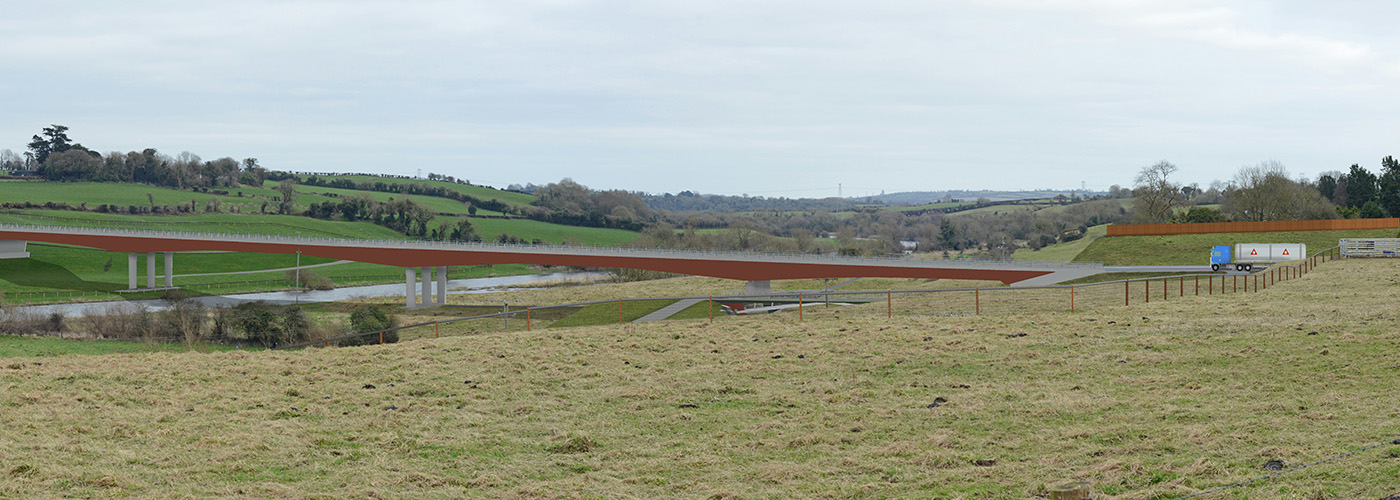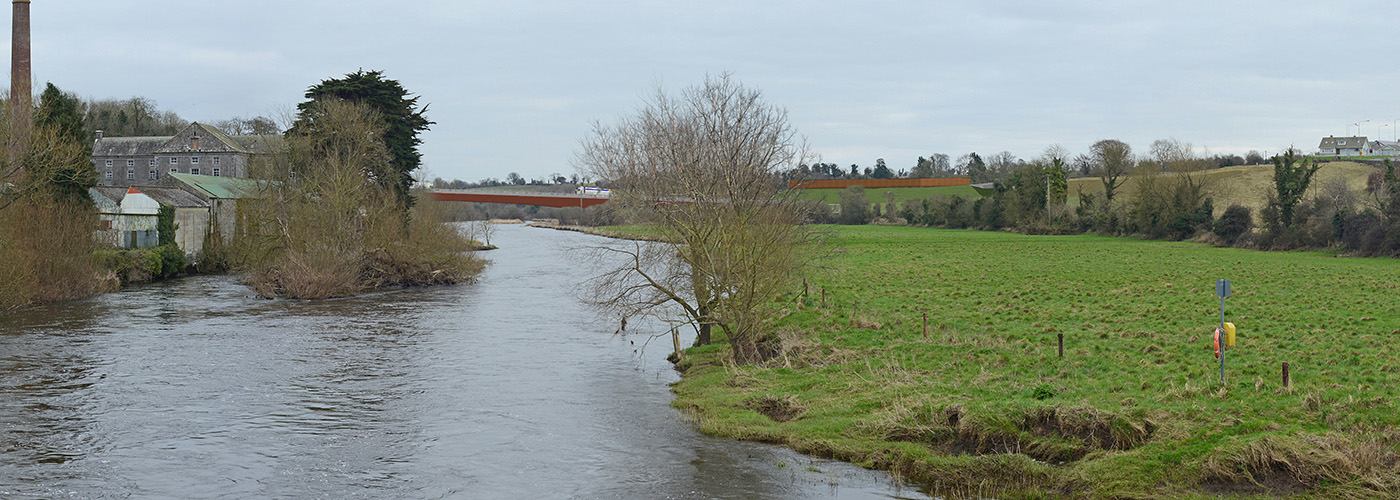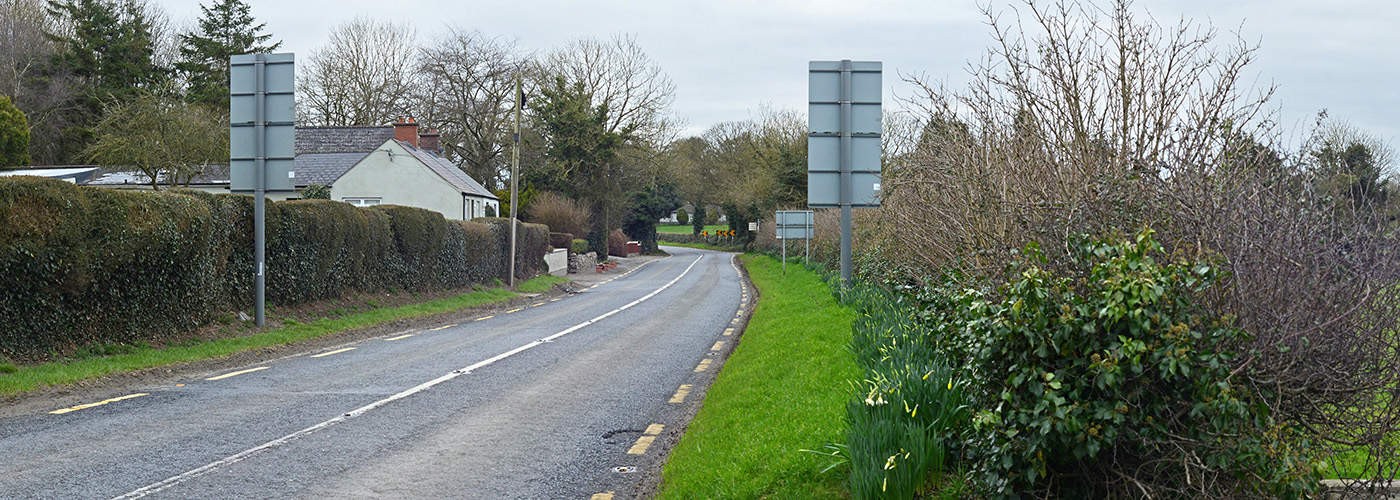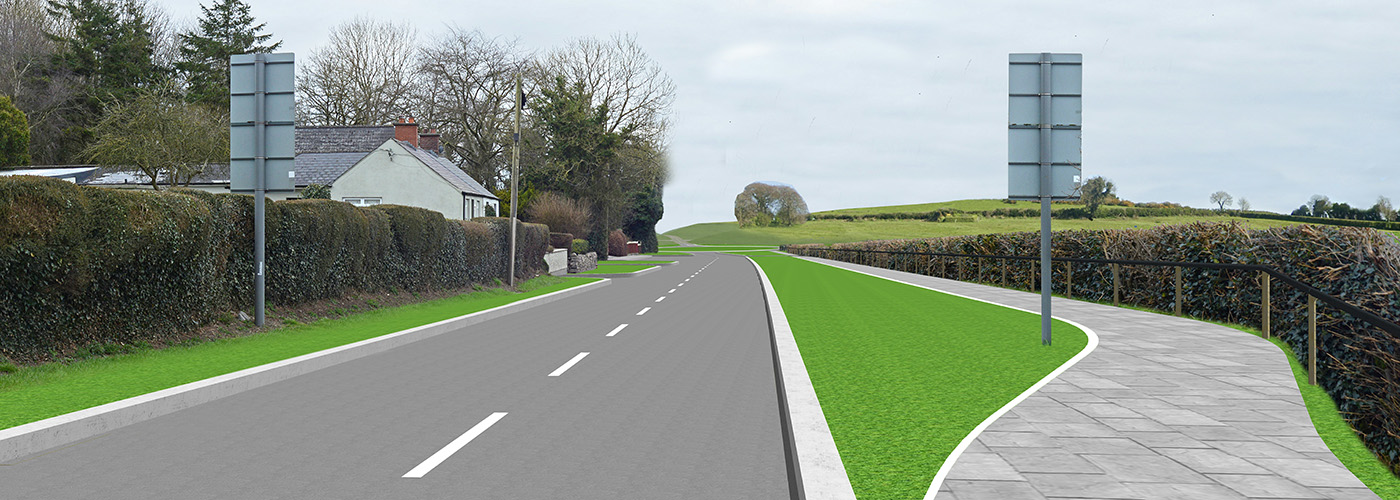About
The N2 Slane Bypass and Public Realm Enhancement scheme will address a sub-standard section of the existing N2 National Primary Route and it also encompasses public realm enhancements and traffic management measures within Slane village, together with works on the N51 between the proposed bypass and the centre of the village to further enhance the village centre as a viable, vibrant and attractive location for people to live, work and visit once through traffic has been redirected from Slane Village.
The provision of the bypass, the public realm and the N51 improvements are essential to achieve a safe, reliable and sustainable multi-modal transport network which benefits the village of Slane and wider regional priorities for sustainable land use, sustainable transport and climate mitigation. Meath County Council has identified a preferred option for the bypass layout, which will also facilitate the delivery of significant elements of a public realm plan.
Proposed N2 Slane Bypass and Public Realm Enhancement Scheme
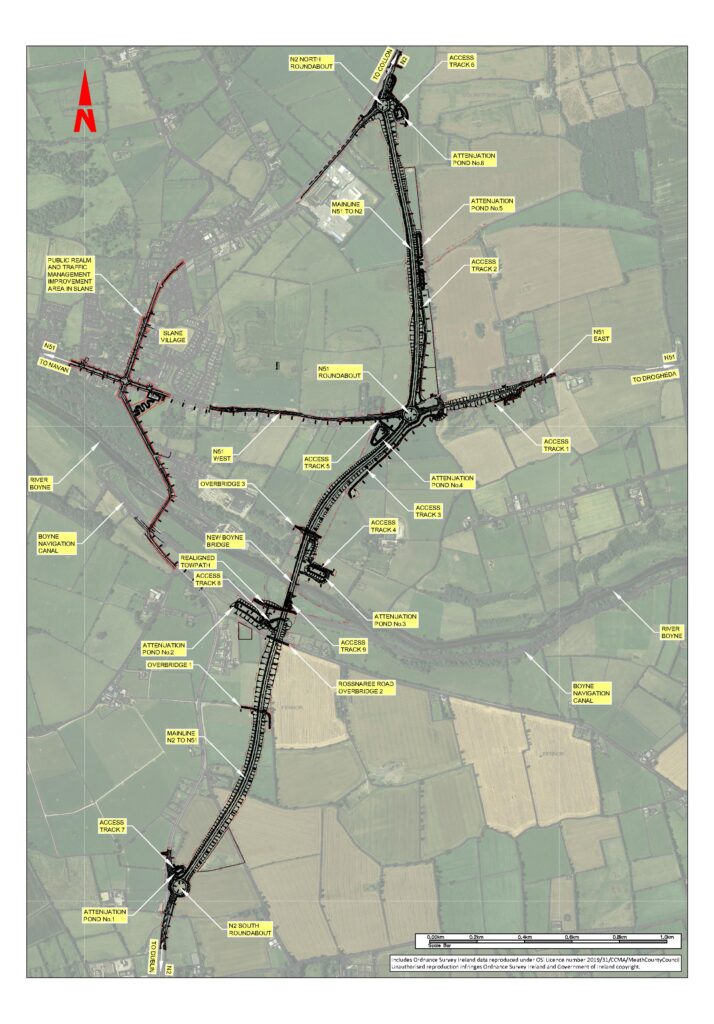
Key Features of the N2 Slane Bypass and Public Realm Enhancement Scheme
- N2 Slane Bypass (3.5km long)
– Type 2 Dual Carriageway with combined footway/cycleway and 3 at-grade roundabouts;
– Major Bridge Crossing of the River Boyne SAC – 258m long structural steel 4 span bridge;
– Active & Public Transport Modes integrated in the scheme e.g. footway/cycleway, bus stops, off-street parking. - N51 Route Improvements
– Online route improvements between the village and the new N2/N51 roundabout and realignment of a short section of the N51 to the east of the new roundabout to improve substandard alignment.
- Public Realm Improvements within Slane village
– The scheme integrates recommendations of the Public Realm Strategy and Plan commissioned by the MCC Planning Department, which includes:- Reconfigured junction design – East-West Priority;
- Redistribution of existing road space and traffic calming;
- HGV 3-axle ban on existing N2 North and South of the junction;
- Provision of new off-street carpark (including EV Charging);
- Improved sustainable transport measures within the village including pedestrian and cyclist link to new off-street car park;
- Urban design, landscaping and streetscaping;
- Removal of existing gantries on Mill Hill.
Latest News
An application for development consent has been submitted to An Bord Pleanála. Click here for further details.
